By Marsten Anderson The Alycia Anderson Company Staff
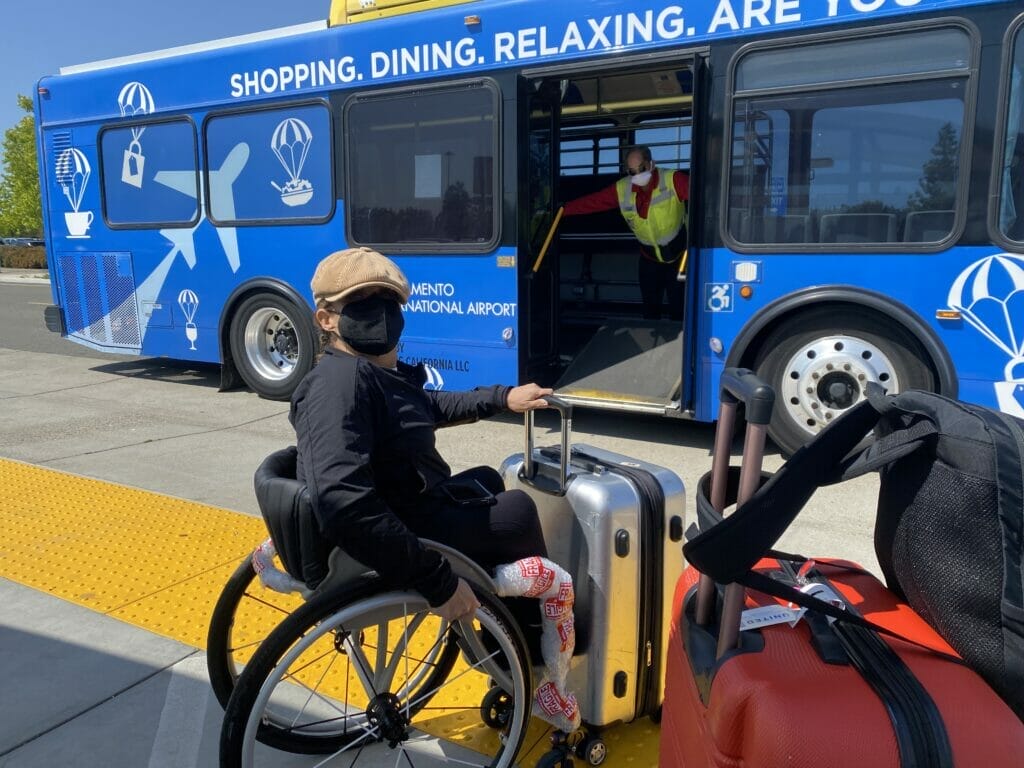


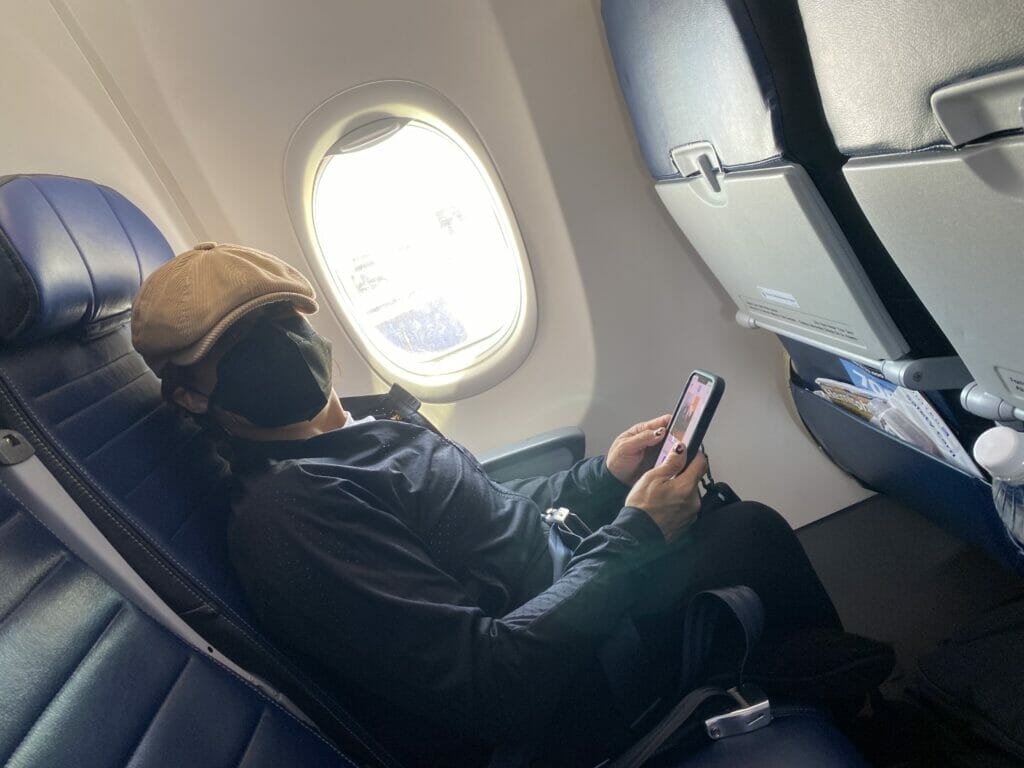
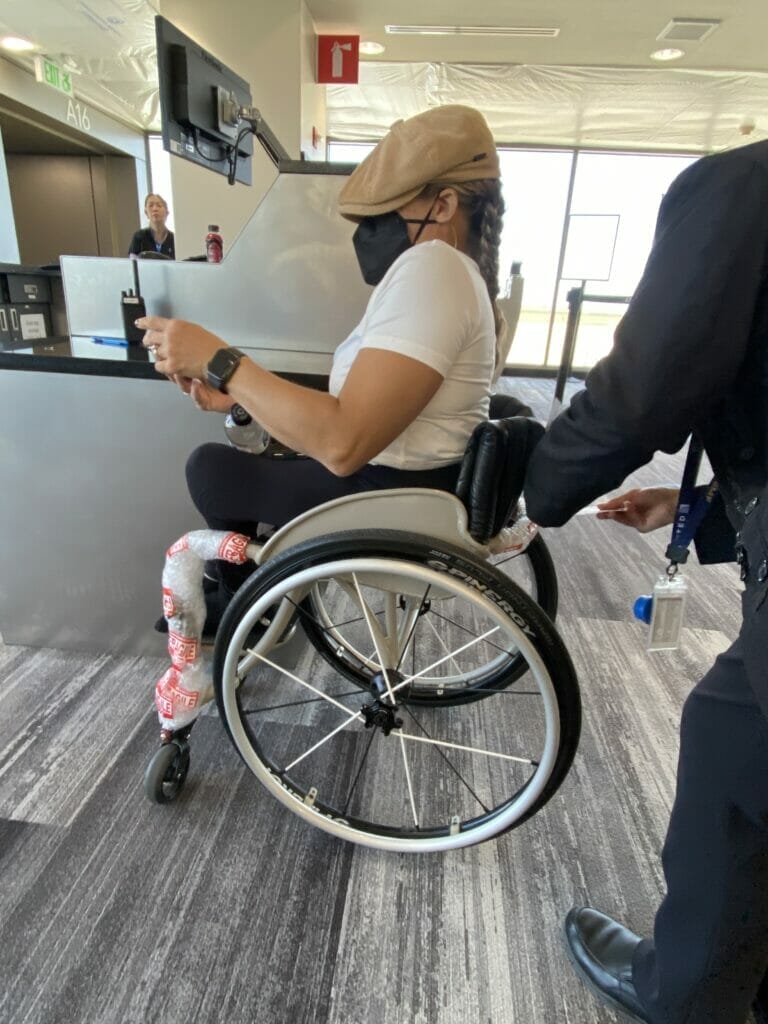
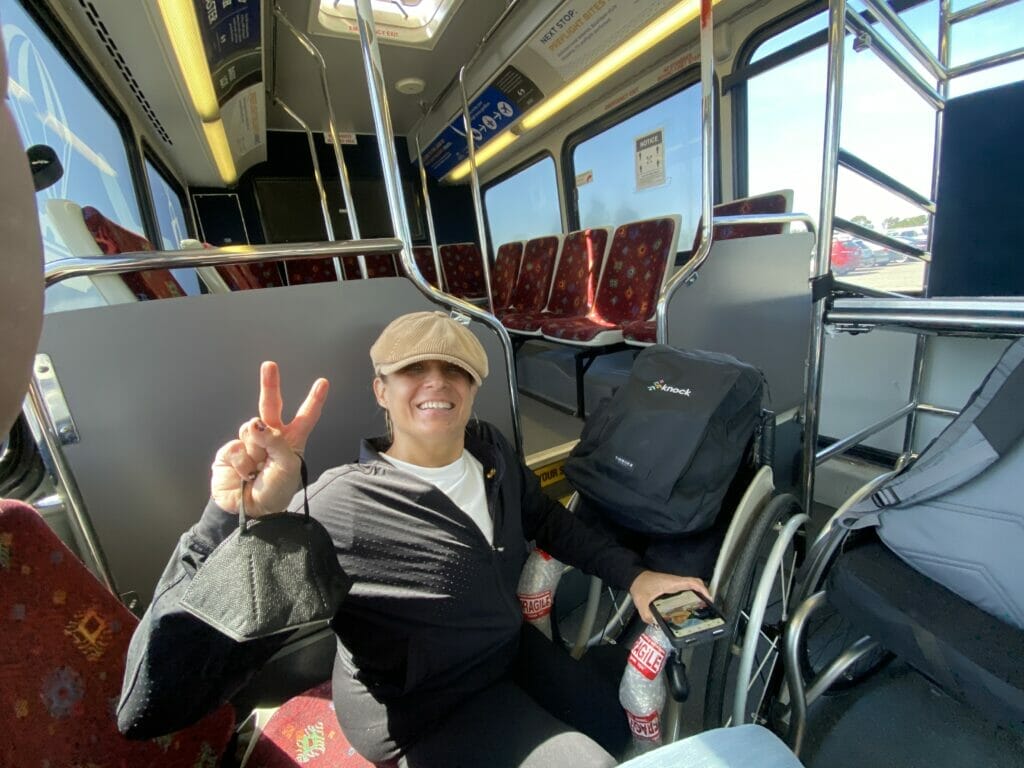
In the Modern World
Destinations around the globe are becoming ever more accessible and the need for traveling by air for many has increased in frequency and necessity. Making your way through airports, security checkpoints, terminals, to your gates and eventually on to the plane can be daunting for any traveler, but the experiences of passengers traveling in wheelchairs and other mobility devices is especially challenging, laden with additional steps, extraordinary treatments and potential risks.
The intention of this article is not to over exaggerate or misinform the reader, but rather to shine a light on what it is like rolling into these ports of entry and navigating through them to your desired destination.
Let’s start with arriving at an airport in a wheelchair
And the many ways that may occur. If you are not arriving in an ideal scenario of being dropped off at the departure passenger check-in locations, it starts with parking your car. We all know the devised categories of daily, long-term, economy, etc… options that may be available for passengers which all generally offer a limited number of accessible handicap parking spaces. For the sake of attempting to keep the length of this posting to that of an article rather than a novel, I will simply say, depending on the time you have allotted yourself to make your flight this process can be uncomfortable to excruciating.
The formula for parking basically consists of a cost that is generally higher the closer you are to the airport accompanied by less available handicap parking spaces, factoring in the imposter syndrome variable filling spaces with high-end vehicles and all the other tangible variables of how many pieces of luggage you are traveling with, number of mobility devices needed, any potential co-passenger assistance, skywalks, crosswalks, elevators and available accessible pathways to the check-in counter. Many times even if you are willing to pay the disability convenience tax of parking up close, you are forced to slowly but surely circle your way through the levels of the parking structure and all the way out to the economy lot to find an available handicap spot to park in, at which point enters the dreaded shuttle ride.
Now the shuttle experience
Let’s say you are arriving at the airport in a rental car, but oftentimes the experience is something you may find in your worst dreams. There are several lived scenarios that come to mind: the shuttle pulls up and your fellow able-bodied travelers scurry on to the filled shuttle and the driver says you will have to wait for the next one, you see the shuttle coming up – the driver wave – and the shuttle drive on by, the shuttle pulls up the driver pops his head out and says our lift is broken – sorry you will have to push to the gates, the shuttle pulls up – the driver asks everyone on the bus to stand up and move to the back of the bus so that he can then load you on. These are just a few of the scenarios that may occur.
The check-in experience
But first let’s reflect on the joys of travel and the wonderful images of the relaxed traveler stretching out on the plane, blue skies, warm towelette and cold refreshment being delivered by the ever attentive flight crew in the commercials that enticed you to pick your carrier for today’s flight.
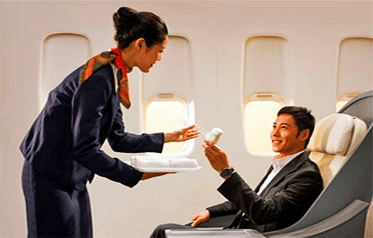
Hold-on, okay, not quite yet. When you are traveling in a wheelchair the check-in process seems to be different at every airline carrier. Let’s start with some of the check-in similarities, the switchback lines, the self-check kiosk, priority lanes and the final luggage weigh-in. Every time it seems this process is going to be a surprise when traveling. Depending on the day, the time of your flight or maybe the stars and the moon, either you are lined up outside the sliding doors into these counters or it’s a ghost town and you can simply walk and get your boarding pass. And hence the invention of the self-check kiosk, the early check-in travel app and whatever other opportunity you may know of to expedite this process.
Unfortunately, if you are traveling in a wheelchair these wonderful inventions are useless to you. On scanning your ID at the kiosk and nearing the finish line of the check in, the question do you have a wheelchair appears, and on entering yes the light above the machine activates and no you did not win the jackpot. You are now awaiting an attendant to help you complete the check-in process, yes, the one in front of a line going out the door with no other attendants in plain sight. You notice the ADA counter that has been installed with no one at it. The idea of the priority line comes to mind, however now the immense staring eyes, feeling of guilt and shame begin to boil from within.
The extra step of what is called the “inspection” of your medical device is what is necessary to pass through this step of your traveling process. It is the point at which someone who doesn’t use the equipment, and most often doesn’t know anything about it, looks at the equipment and tags your device with ranging from a sticker type of material to zip ties a notice that says what condition they have determined your equipment to be in, along with some guesstimate of the weight and or dimensions. This will be used later in the process, if “by chance” your carrier may mishandle your equipment during the transportation process. Depending on the carrier this process can take anywhere between 45 minutes to a couple of minutes to complete, are you feeling lucky?
Okay, we have been granted our boarding pass and instructed to proceed to the security checkpoint to pass through to our gates!
TSA in a wheelchair is another obstacle
That we all have to endure and I completely understand the necessity of it, as always our collective safety should always be a top priority. For everyday wheelchair users, this is when we begin to notice a lot of passengers have suddenly lost the ability to walk and begin to join us in wheelchairs ushered around by a professional staff of non-carrier employees. As I personally have walked very long distances wearing a leg brace that encased my right leg to keep it straight, as it has no power to do that on its own, I have compassion for the various ailments that we as humans may be plagued with that warrant additional assistance from another human to overcome, and I have mixed feelings when I witness those being escorted through the process while I am way-laid and separated from my personal property for what sometimes feels like a virtual eternity.
Again for the sake of the length of this article, and any statements that I would make that may change the way that you may think of me, I will keep this to an abbreviated version. The TSA process in a wheelchair has potential pluses (sometimes… a quick line to get to the scanning machines) and negatives (my wife and I have waited in front of the scanners out of eye-sight and separated from our wallets, phones and all other personal properties for literally over 10 to 15 minutes while waiting for our escort to the beloved pat down).
For those of you who have never enjoyed the experience of a full body pat down in public, you may not understand, but for those of you who have, you may feel as I do, a bit violated. As they have yet to devise a scanner that those in wheelchairs can just pass through like those used by our able-bodied counterparts, we are required to allow an invasive search of our bodies known as the “screening.” As a TSA agent is putting on rubber gloves and asking you the question, would you prefer to do this in private? You might feel a little scared too, I have yet to ask for the private screening out of fear of what may occur out of the sight of my fellow passengers.
Okay, so the TSA process varies from trip to trip like many other aspects of the travel process I have already explained, and you can expect to have an amicable, to grumpy, to downright rude agent guide you through your screening. All the while you will be thinking to yourself, aren’t I the least likely candidate for malevolence, and damn those imposters.
After a brief or prolonged back of the hand rub down, you have made it into the terminal and are finally on your way to the gate, almost airborne! Okay, so we have already gone through the extra steps of the “inspection” at the check-in counter, the “pat down” at the security checkpoint and now just a few more extras and you will be on your way.
They start with a visit to the gate agent, no we are not asking if by chance there is any room in first class, we are asking the agent to tag us once again with a “claim at gate” tag. This notifies the carrier that the equipment we are moving around in will be required when we deboard the plane (hopefully in one piece).
The next step, the “Pre-Board”
This step only happens if you have made it through all previous mentioned steps in time for it, and for us travelers in wheelchairs it is not as extravagant as it seems to sound to our able-bodied co-passengers. It starts with the agent asking, “will you require assistance, an aisle chair, to board the plane?” The answer for most everyday wheelchair users is obviously yes, but for some like me I can hop on one leg sometimes to my seat, depending on my current health conditions and how far I will need to hop. Having been through both experiences I prefer to hop, but if not hopping then the aisle chair goes like this. The non-carrier employees await you at the door to the plane, with a chair that is more like a cargo dolly. Usually there are two of them, and they are watched over by the gate agent and flight attendant throughout the process. You get strapped into the aisle chair with a full blown Nascar style seat belt system across both shoulders, waist and also across your lower legs and asked to cross your arms as they back you into the plane.
This process is again sometimes performed in front of full planes of other passengers if you happen to miss your “pre-board” opportunity and it can be a very demeaning and uncomfortable experience. Let me just mention at this point, that if you might have the urge to go to the lavatory in flight, you may expect a similar experience just handled on a portable/stowable version of the aisle chair with somewhat less experienced handlers.
Flight crews prepare for landing
Finally, we have landed at our desired destination and all of those people who needed extra help getting on to the plane, pop up grab their bags and generally are the first to get off the plane, and us real wheelchair users fairly in some respects wait for every other able-bodied passengers to deplane, while we keep our fingers crossed and hope that: one, they don’t forget we need an aisle chair to get off the plane, and two, that our wheelchair is waiting “top side” and in one-piece.
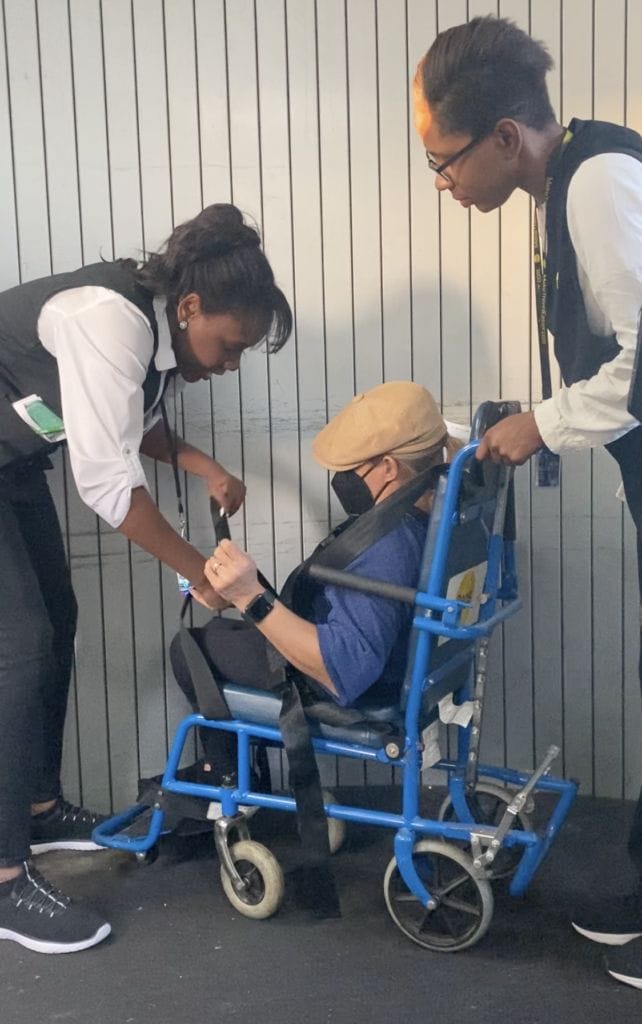
In conclusion
For those of you who have made it through this far in the article, we have arrived at our destination and you may now have a better sense as to what it is like to travel on an airplane in a wheelchair. Look forward to other opportunities to hear about all of the other nuances that air travel requires, like dietary preparation, airport restrooms, and all the other things you can only imagine it is like when you roll through the airport rather than walk.
Here is a list of links, that can help you understand better the current initiatives and resources available for travelers with disabilities:
- Air Carrier Access Act Advisory Committee (ACAA Advisory Committee)
- Airline Passengers with Disabilities Bill of Rights
- DOT Launches Public Awareness Campaign to Ensure Air Travelers with Disabilities Know Their Rights
- U.S. Department of Transportation Requires Airline Lavatories to Be More Accessible for Wheelchair Users
- U.S. Department of Transportation Announces that United Airlines Will Implement Industry-Leading Improvements for Passengers Using Wheelchairs
- TSA shares tips for travelers with disabilities, medical devices, medical conditions
- TSA Accessibility Information
- TSA Passenger Support
- TSA PreCheck® FAQ
- TSA Emerging Technology
- TSA Disabilities and Medical Conditions Information
- TSA Civil Rights Information